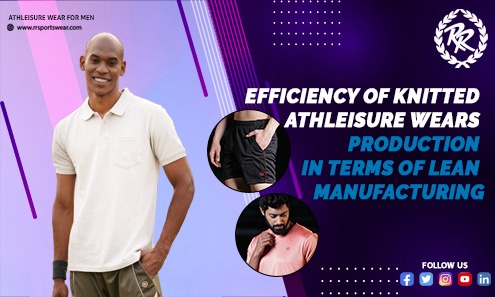-
Bag is empty
-
Bag is empty

Lean manufacturing aims to eliminate waste from business processes and accelerate the flow of product or information with less waiting and bottlenecks. By eliminating this waste, you can do more with little or no additional people and resources, increasing efficiency.
Lean apparel manufacturing promises to increase productivity, reduce cycle capital cut down lead times, eliminate production waste, improve product quality and ultimately improve profitability. However, the Bureau of Labor Statistics reported that the garment industry's labor productivity index fell year-on-year in 2014 and 2015. So how can apparel and fashion
companies achieve lean manufacturing?Sewing products manufacturers need to constantly improve product quality, production speed and operation efficiency to keep up with the competitive industry. The answer could be lean apparel manufacturing, which translates into lower production costs, increased efficiency and shorter production times.
Lean manufacturing is a systematic approach to achieve highly efficient factory or plant operations while eliminating waste. The seven primary types of waste are defined as follows: Transport, inventory, handling, maintenance, overproduction, revision, disruptions
Approaches to implementing lean practices in the apparel, fashion and footwear industries vary, but the core principles of lean manufacturing are based on 5S and Kaizen.
5S can be translated as:
1. Sorting
2. Discontinued
3. Brilliance
4. Normalization
5. Persevere
Kaizen meaning "improvement" is Japanese word. In Garment Manufacturing, each level of production can be upgraded, from raw material management to inventory management.
When workers move from one place to another, the process adds no value to the product. Lean management thus determines how freight can be reduced, where freight can be eliminated and transport time reduced. The materials must be delivered to the construction site on time. Lean requires materials to be transported directly from suppliers to where they will be used on the assembly line. This is called point-of-use storage (POUS).
Factory inventory represents items that are in production, ideal factory resources (materials), or stock materials. These losses can be minimized by controlling the flow of each piece in the sewing room and reducing fabric inventories through proper fabric use.
Workplace overcrowding is the result of poor employee training in work methods and the habit of working in traditional ways. In industries where there are engineering departments dedicated to designing workplace layouts, operators can benefit from movements due to poor workplace layouts. Wasted traffic is minimized by reducing packing and assembly time in the packing/finishing department, reviewing and eliminating high risk areas, and locating fabrics in the fabric workshop department with proper labeling and styling.
It is a waste of money and effort to create errors in a template or other process. The lean management industry aims to produce clothes for the first time. It is a hazardous waste among the 7 types of waste because it generates other wastes such as re-transportation, rework and refurbishment of this defective product. Proper inspection of fabrics and trimmings reduces turnaround times by providing and analyzing proper fabric reports and using quality fabrics and other materials.
Apparels require a lean culture and the use of lean tools. Value-added activities are anything that converts materials into the customer's desired product, and waste must be eliminated at every level, from reducing labor time in the process to minimizing production costs by saving time. All plant culture needs to be involved in discussions to understand the approach and order, and some technologies may need to be applied.
Manufacturing Shop Floor Control technology has been used by many of the world's largest apparel and apparel manufacturers to streamline and streamline factory operations. Shop Floor Control increases work efficiency, standardizes processes and reduces wasted time. Recently there have been several new developments in shop floor control software that make this technology even more accessible, accurate and useful.
Manufacturers are facing competition globally. They are becoming increasingly aware of the importance of a modern management philosophy that gives them a competitive advantage in the free market system. Today, the key to being competitive in the international market is to continuously improve quality and efficiency. The main goals of using lean manufacturing are to increase productivity, improve product quality and cycle time, reduce inventory, shorten lead times, and eliminate production waste. To achieve this goal, Lean Manufacturing philosophy uses various concepts such as Kaizen, Kanban, 5s, OEE, JIT, etc. This article explains the concepts of Lean, its principles, meaning and benefits. An in-depth study of the various Lean tools is presented. The article also discusses approaches to implementing lean practices in the apparel industry.
Subscribe to stay updated on new products and more, straight to your inbox.